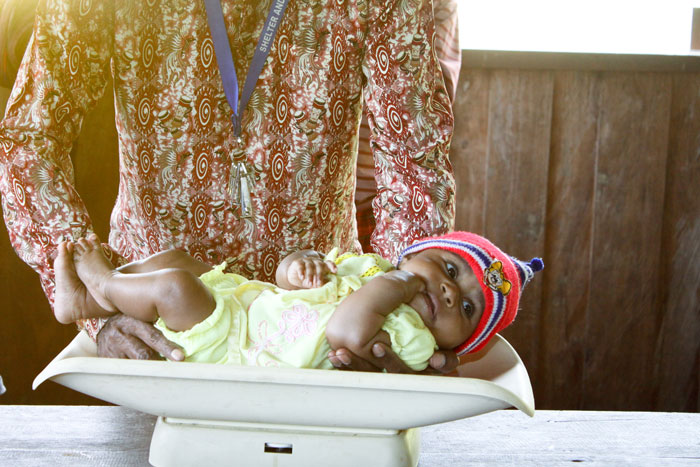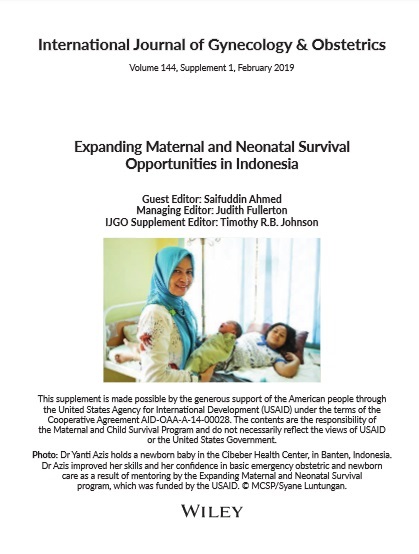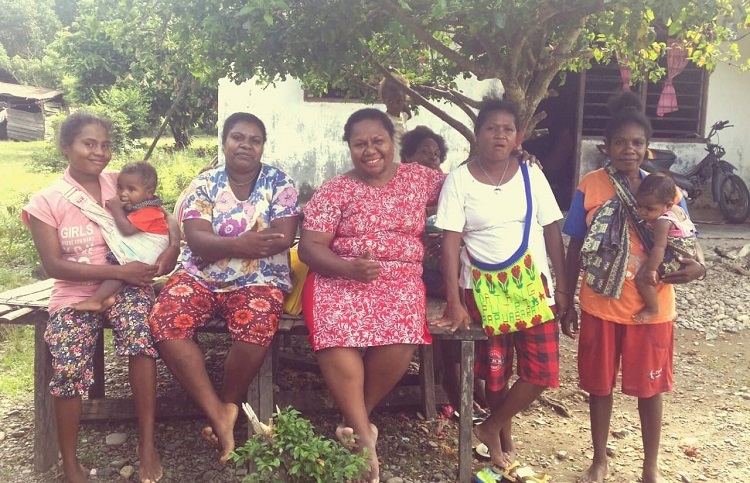Distrust in doctors’ decision making around c-sections is a key cause of Papuans’ avoidance of hospitals
The maternal mortality rate in Papua, Indonesia, is 573 women per 100,000 live births, 1.6 times the national Indonesian average. Only 35 per cent of births in Papua take place in a health facility compared to 76 per cent nationally, and only 60 per cent involve a skilled attendant versus 93 per cent nationally.
Most analysts source the problem to a combination of geographical barriers and poverty that hampers women’s access to transportation to urban health care facilities, alongside ‘cultural’ barriers and traditional preferences that lead most Papuan women to giving birth at home without medical assistance.
However, while Papuan cultures are certainly diverse and there are rich beliefs around reproduction, our research findings indicate that culture in itself does not inhibit health care uptake in urban areas.
Between 2015 and 2019 we conducted qualitative research on Papuans’ contemporary use of antenatal care and obstetric services in Jayapura, Manokwari, Biak and Wamena. We interviewed 45 women and 15 men who had used antenatal care or given birth in a health facility in the past five years about their experiences, practices, beliefs, hopes and fears related to hospital care, services, doctors and technologies.
Overall, we found that Papuans wanted medical advice, technology and interventions when necessary. They sought an active role in all aspects of pregnancy and childbirth, and valued honest, direct and respectful advice from doctors and nurses. The cultural values that mattered were thus not related to ‘traditional’ beliefs but rather contemporary convictions. A ‘normal’, or vaginal birth was seen as best for the mother, the baby and the Papuan population at large. Concerns over Indigenous depopulation and a history of traumatic interventions in the name of birth control, development and health care contributed to the politicisation of childbirth.
Where to give birth?
Women and men made decisions about where to give birth for strategic social reasons in conjunction with desires for support and comfort. For example, a woman travelled from a rural area to Jayapura to give birth at her in-laws’ house because she and the baby’s father were not yet officially married and this was a way of making the relationship tangible amongst their relatives and leveraging care and support. In a different case, a young mother was cared for at the home of the baby’s father and by his relatives to demonstrate to her family, who were unhappy about the pregnancy, that the young man and his family were prepared to take responsibility. The majority of women had given birth at least once in a hospital setting, usually for their first birth, due to fear of the unknown and pain during labour.
After the first birth, though, women preferred to deliver at home with a relative or friend who had nursing experience. A ‘home’ birth might occur at the house of in-laws, parents, or an uncle, and might entail relocating to another city or town temporarily. Most women interviewed said they preferred an urban home birth over a village birth because city residences were cleaner, and water and supplies were accessible. A few women, however, said they deliberately went to a village so they could give birth ‘traditionally’, without medical intervention, in their customary territory. This was seen as an appropriate response to keep them safe from c-sections and other medical interventions that they felt could be deliberately used by the Indonesian government to damage their reproductive capacities or future fertility to eliminate the Papuan population.
None said they preferred to give birth alone, contrary to some reports on birth traditions in Papua. Only one participant said she gave birth alone, and that was not deliberate: all other household members were away working.

In terms of hospital experiences, many women and men observed that labour wards were stressful, undignified and overcrowded. At one hospital birth a stranger walked into the curtained cubicle where a half-naked mother was in active labour. Nurses were unsupportive if not harsh, while mothers and fathers feared doctors would order a c-section if they did not deliver quickly.
C-sections
C-sections were common among our participants, and included both younger and older mothers across a range of income levels. Over half of our participants had had a child born via c-section. However, this should not be taken as evidence of prevalence in the wider population because we used snowball sampling, and it could be that those who had had a c-section were more interested in talking to us about their experiences.
In only two cases did the participant state, or provide a description suggesting, that it was an emergency c-section. Rather, doctors typically told women they should undergo c-section during antenatal care or upon arrival at the hospital in labour. The most common reasons given were that the mother’s pelvis was too small, the baby was too large or overdue, or the baby was transverse or breech. Sometimes doctors gave no reason. One woman was told she should have a c-section because the maternal mortality rate in Papua is too high.
Some participants said they felt that doctors were eager to give c-sections as a matter of course, without looking at each patient individually. Some of the men and women from the highlands said they felt doctors were giving c-sections to deliberately lower Papuan fertility rates: more than three repeat c-sections is considered medically unsafe, VBAC (vaginal birth after caesarean) is non-existent in Papua, and participants were advised after c-sections to wait up to seven years in between pregnancies.
Many participants interviewed did not want c-sections because they feared that doctors might put women’s organs back inside wrongly, sterilise her without her knowledge, or cause other injuries. A few women spoke of birth injuries and pains that continued to plague them. Some said they felt that a ‘normal’ birth was essential to infant health.
Desires to avoid c-sections affected decisions about pregnancy, antenatal care and where to give birth. Some women said their food intake should be restricted to avoid growing a large baby. Some women arrived at the hospital in labour at the last moment so that they could avoid interacting with nurses and go straight in for a vaginal delivery.
During antenatal care people had often been told that everything was fine so they questioned why the doctor hadn’t told them that the mother’s pelvis was too small, or the baby was in a difficult position, or was too large. Some recounted how they demanded to see an ultrasound to make their own assessment.
One of our participants, an obstetric nurse, said it was a rule among some doctors she had worked with that if a woman was less than 153 cm in height she should automatically be assigned a c-section.
Some women who were told they needed a c-section challenged this advice. Mary (pseudonym) saw a few doctors in the latter stages of her pregnancy and they gave contradictory assessments of her condition. When she was then told to have a c-section, she was reluctant, unsure if she believed the doctor’s opinion. She also recalled her cousin who was ‘very weak’ for a long time after a c-section. Afraid of having a c-section in a hospital that was ‘dirty’, she went home.

Another participant in labour travelled between hospitals seeking a second opinion, and the third doctor said ‘this baby’s hand is already at the exit’ and delivered the baby.
Some women and men talked of how they negotiated with the doctor – for example refusing a c-section and being offered a ‘vacuum’ delivery instead.
The way forward
Doctors are financially rewarded for c-sections through the public insurance system, but we think the problem goes deeper than this. Indonesia is not meeting maternal mortality targets, and increasingly attention is focused on the hours and minutes surrounding birth when technological and surgical interventions can be used, or overused, in the name of saving lives. Yet, ironically, the USAID-funded program EMAS (Expanding Maternal and Neonatal Survival) did not run in Papua, or any of the eastern provinces with high maternal mortality rates.
In addressing maternal health, more attention to intersecting structural drivers is warranted, including a woman’s health throughout life, and the wider conditions in her community. Globally, research shows that increased or more sophisticated technological intervention and medical care during pregnancy and delivery does not improve maternal outcomes for minority and Indigenous women.
It may be difficult for some Papuans to trust Indonesian doctors when the state so readily sanctions and perpetrates violence against Papuans. At the same time, avoiding hospitals and c-sections is a reasonable response to doctors who act without consent, do not provide enough information, or expect patients to be submissive.
At a minimum, health service providers should expect that Papuans want dignified care, will demand information, and will critically reflect on medical advice. More questions need to be asked about the ideologies, training or other factors that may influence obstetricians to promote routine c-sections to their patients in Papua.
Jenny Munro is an anthropologist at the University of Queensland. Els Rieke Katmo, PhD is a lecturer in Agribusiness at Universitas Negeri Papua, Indonesia. Meki Wetipo is a researcher with the Honai Centre based in Jayapura, Papua.












